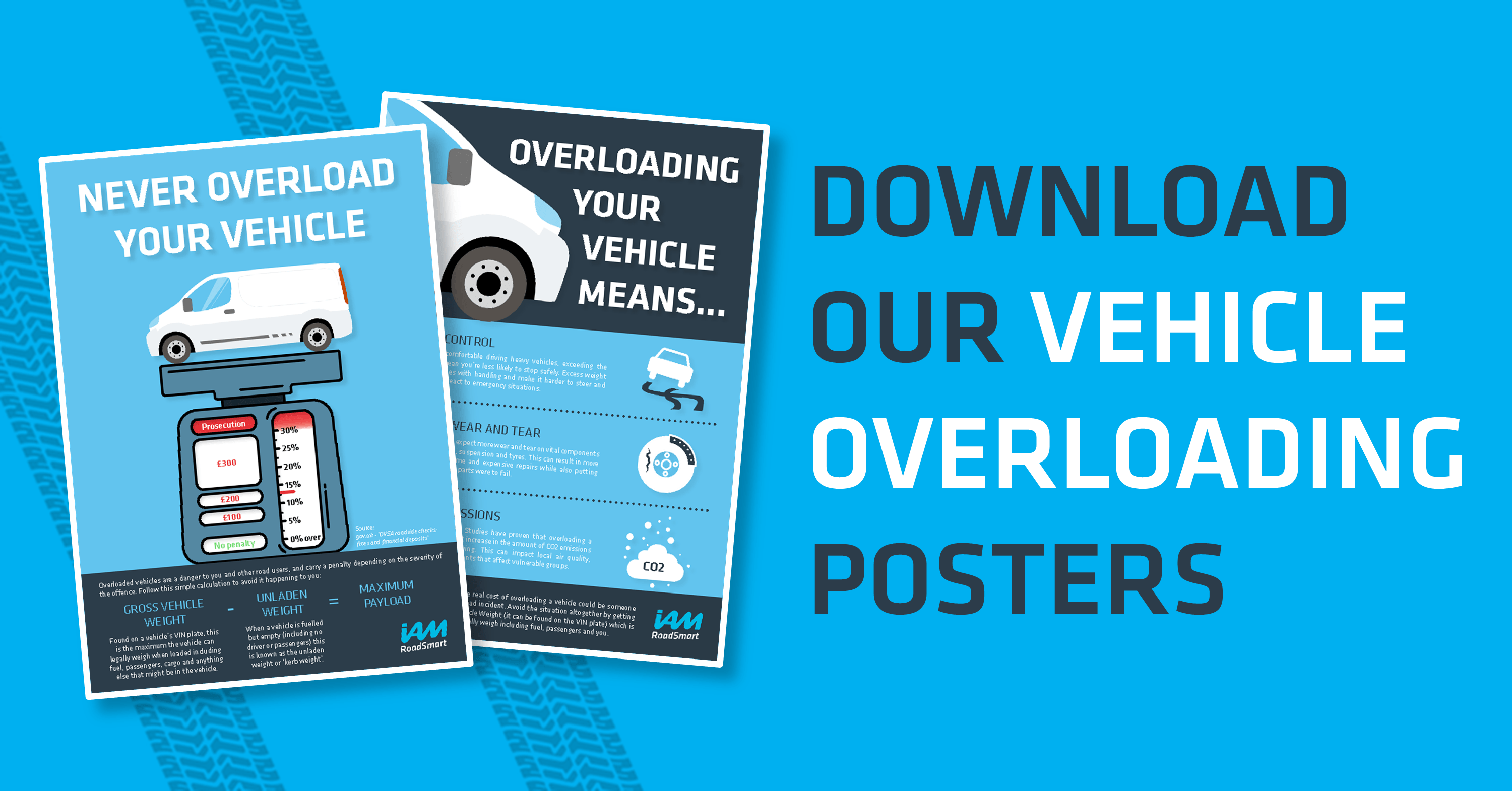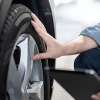
Whether carrying materials or tools, parcels or people, it’s important to know the weight limits for your vehicle. However, with recent roadside tests finding 1 in 4 vans exceeding their permitted maximum weight limit¹, it’s clear the issue of overloaded vehicles is not limited to a few isolated cases. Read our tips below and download our free poster to remind your drivers of the dangers that come with overloading a vehicle.
Click below to download:
IMPACT ON DRIVING AND THE ENVIRONMENT
- Reduced control. Even for highly skilled drivers comfortable with heavy vehicles, exceeding weight limits can mean the driver is less likely to stop safely as the brakes are stretched beyond normal limits. The excess weight can also cause issues with handling and make it harder to steer and manoeuvre and react to emergency situations.
- Wear and tear. Vehicles that exceed their weight limit can expect more wear and tear on vital components such as brakes, clutches, suspension and tyres. For fleet managers, this can result in more frequent vehicle downtime and expensive repairs while also putting drivers in danger if those parts were to fail.
- Increased emissions. It’s not just the drivers at risk. Studies have proven that overloading a vehicle results in a significant increase in the amount of CO2 emissions that are released when driving². This can impact local air quality, increasing the harmful pollutants that affect vulnerable groups.
THE PENALTIES
- Drivers with overloaded vehicles will face fines and prosecutions depending on the severity:
- 5-10% over = £100
- 10-15% over = £200
- 15-30% over = £300
- More than 30% over = Court summons with the driver and/or employer likely facing prosecution and a large fine.
- The responsibility for an overloaded vehicle does not stop with the driver. Employers have a duty of care toward their drivers and if an overloaded vehicle is involved in a collision, they could face prosecution for health and safety violations.
- It’s worth remembering that the real cost of overloading a vehicle can mean people lose their lives in serious on-road incidents, so try to avoid the situation altogether.
HOW TO AVOID OVERLOADING A VEHICLE
- Know your weights. When a vehicle is fuelled but empty (including no driver or passengers) this is known as the unladen weight or ‘kerb weight’. On a vehicle’s VIN plate you’ll also see a Gross Vehicle Weight (GVW) rating, which is the maximum the vehicle can legally weigh when loaded including fuel, passengers, cargo and anything else that might be in the vehicle.
- Calculating your payload. Knowing your unladen weight and GVW rating means you can easily calculate your payload:
- GVW – Unladen weight = Maximum payload allowed
- Safely loading a vehicle. Even if you’re sure that the vehicle and its payload (including drivers and passengers) is below its GVW rating, it’s important to safely load the vehicle and ensure that the axle weights are not exceeded (also found on the VIN plate). It’s possible for a vehicle to be under its GVW rating but to exceed the weight limit over one axle, which carries the same penalties. See more tips on loading and securing a vehicle here.
- In-vehicle systems. Some newer vehicles are fitted with in-vehicle systems to alert the driver when the weight limit is reached. It’s still worth noting the vehicle’s GVW rating and making sure not to ignore any warnings the system gives you.
- Check the handbook. If you can’t find the VIN plate and you’re unsure about what weight limit your particular vehicle has, it’s always best to check the manufacturer’s handbook for detailed specifications.
At IAM RoadSmart we can help to make your fleet safer and more efficient. If you manage a fleet and would like to train your drivers online or on-road, Contact Us today to find a solution that fits your business.
¹Source: Council asks drivers to plan ahead for roadworks this summer
²Source: Effect of Overloading Freight Vehicles to Increased Carbon Dioxide Emissions
If you’d like to remind your drivers of other key safety messages surrounding business driving you view and download our range of fleet safety posters here.



